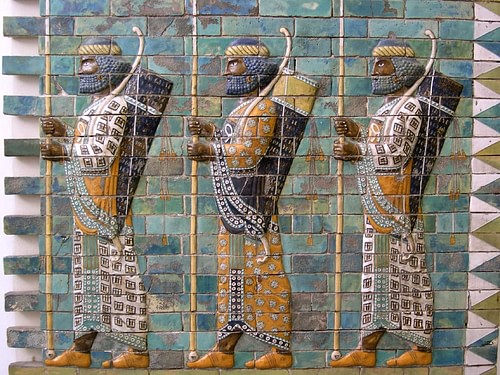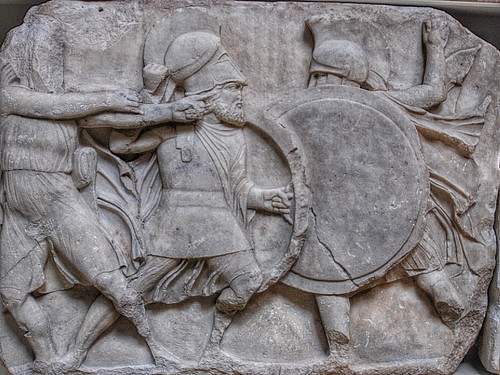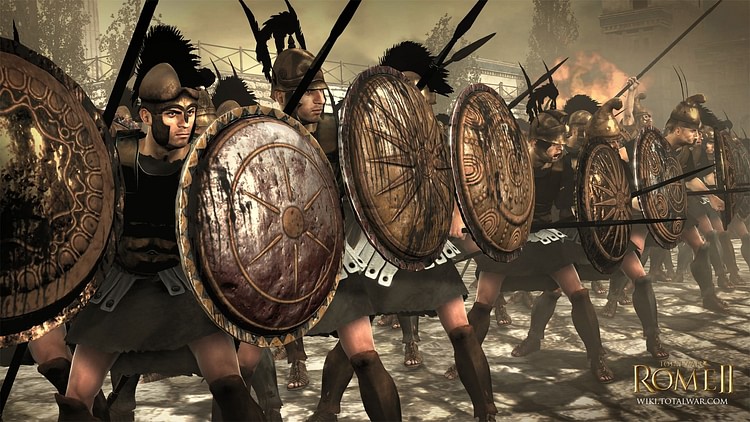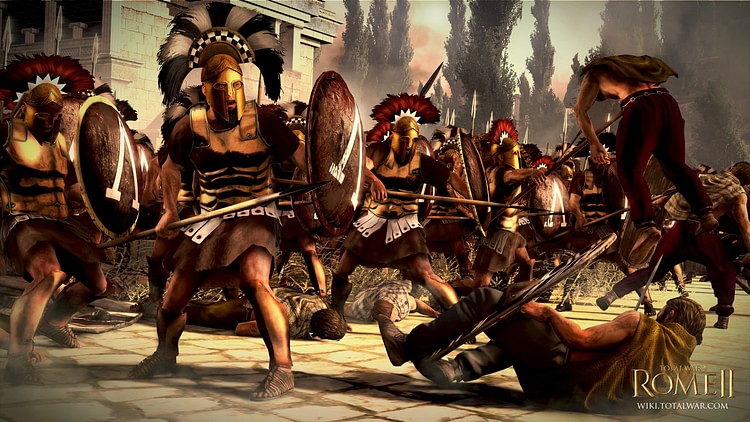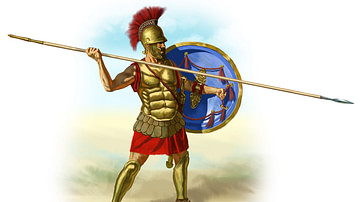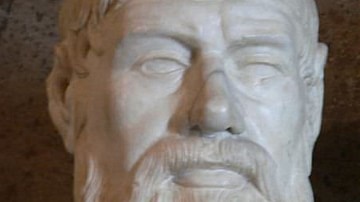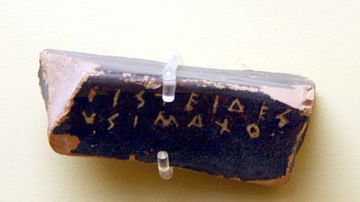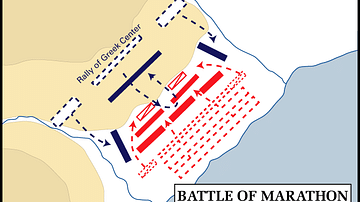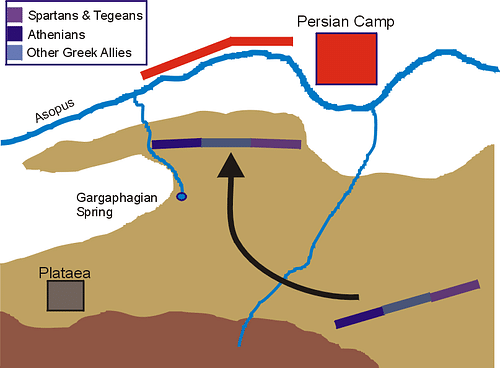
The Battle of Plataea was a land battle between Greeks and Persians near the small town of Plataea in Boeotia in 479 BCE. Following up their naval victory at the Battle of Salamis in September 480 BCE against the same enemy, the Greeks again defeated an invading army sent by the Persian ruler Xerxes I (r. 486-465 BCE), this time thanks to their hoplite warriors. The victory ensured the continued independence of their city-states and permitted an astonishingly rich period of artistic and cultural endeavour to begin which would lay the cultural foundations of all future Western civilizations.
Context: The Persian Wars
By the first years of the 5th century BCE, Persia, under the rule of Darius I (r. 522-486 BCE), was already expanding into mainland Europe and had subjugated Thrace and Macedonia. The next objective was to quell once and for all the collection of potentially troublesome rebel states on the western border of the Achaemenid Empire. In 490 BCE Greek forces led by Athens met the Persians at the Battle of Marathon and defeated the invaders. The battle would take on mythical status amongst the Greeks, but in reality, it was merely the opening overture of a long war with several other battles making up the principal acts. In 486 BCE Xerxes became king, and he invaded first the Cyclades and then the Greek mainland after victory against a token Greek force at the Battle of Thermopylae in August 480 BCE. At the same time as Thermopylae, an indecisive naval battle took place at Artemision, where the Greeks held off the superior numbers of the Persian fleet but were obliged to regroup at Salamis. In September 480 BCE, with the brilliant general Themistocles dictating strategy, the allied Greek fleet drew the Persians into the narrow confines of the straits between Salamis and the mainland and won a resounding victory.
Following the defeat of his armada and the close of the campaign season, Xerxes returned home to his palace at Sousa and left the gifted general Mardonius in charge of the invasion. The Persian position was still strong despite the defeat at sea - they still controlled much of Greece and their huge land army was intact. Xerxes may well have hoped that the fragile Greek alliance between such age-old rivals as Athens and Sparta would break if appropriate diplomatic overtures were made, but after a series of political negotiations, it became clear that the Persians would not gain victory through diplomacy and only war would settle the issue.
The Persian Army at Plataea
The vast Persian Empire stretched from the Danube to Egypt and from Ionia to Bactria, and Xerxes was able to draw on a huge reserve of resources to amass his huge invasion force. Overall command was now taken by Mardonius, the son-in-law and nephew of Darius and cousin of Xerxes. By his side was Artabazus (a cousin of Darius) who led the Parthian and Chorasmian contingents.
Our numbers for the soldiers involved in the battle come principally from Herodotus who wrote an account of Plataea in his Histories; however, the absolute accuracy of Herodotus' estimates are disputed amongst scholars. According to Herodotus, the Persians fielded 350,000 troops against the Greek forces of 108,200. The figures for the Persians may have been exaggerated in order to make the Persians into a more formidable opponent, and perhaps, in reality, they fielded a very similar number of combatants to the Greeks. However, even with a more conservative estimate, the battle involved some 200,000 armed men, the largest such battle Greece had seen and a figure comparable with the battles of Waterloo and Gettysburg.
The Persian force was divided into units of the various nationalities involved but, unfortunately, Herodotus does not specify the strength of each. However, approximate estimates are:
- Persians (the best troops): 40,000
- Medes: 20,000
- Bactrians, Indians & Sacae: 20,000
- Pro-Persian Greeks: 50,000
- Total: 130,000
All of these groups supplied cavalry, creating a combined force of perhaps 5,000 horsemen.
The Greek Army at Plataea
The Greek army was led by Pausanias, the nephew of King Leonidas who fell at Thermopylae, and regent for the young king, Leonidas' son Pleistarchus. Secondary commanders included the two Athenian generals Aristides and Xanthippus, the father of Pericles.
According to Herodotus the Greek hoplite forces were divided as follows:
- Athenians: 8,000
- Corinthians: 5,000
- Lacedaemonians: 5,000
- Spartans: 5,000
- Megarians: 3,000
- Sicyonians: 3,000
- Tegeans: 1,500
- Phleiasians: 1,000
- Troezenians: 1,000
- Anactorians/Leucadians: 800
- Epidaurians: 800
- Orchomenus: 600
- Plataeans: 600
- Aeginetans: 500
- Ambraciots: 500
- Eretrians/Styrians: 600
- Chalcidians: 400
- Mycenaean/Tirynthians: 400
- Hermionians: 300
- Potidaeans: 300
- Lepreans: 200
- Paleans: 200
- Thespians: unspecified
- Total: 38,700
The Greeks had no cavalry at Plataea and only the Athenians had a contingent of archers. Herodotus also numbers the non-hoplite forces which are (conveniently) exactly the same as the number of hoplites each city provided. The exception is Sparta which supplied some 35,000 helots in addition to their 5,000 hoplites.
Weapons & Strategies
The Persians were no doubt confident of success. They had a massive army, the Greeks were potentially divided, and the only blip in the long chain of land victories they had enjoyed in the previous 50 years had been the setback at Marathon.
The two opposing armies were essentially representative of the two approaches to Classical warfare - Persian warfare favoured long-range assault using archers followed up with a cavalry charge, whilst Greek warfare favoured heavily-armoured hoplites, arranged in a densely packed formation at least eight men deep called the phalanx, with each man carrying a heavy round bronze shield and fighting at close quarters using spears and swords. The Persian infantry carried a lightweight wicker shield and were armed with a long dagger or battleaxe, a short spear, and composite bow. The Persian forces also included the Immortals - an elite force who were probably better protected with armour and armed with spears, a contingent of well-armed Egyptian marines and several thousand hoplites from allied Greek states, notably the Thebans. The Persian cavalry were armed, as the foot soldiers, with a bow and an additional two javelins for throwing and thrusting. Cavalry, usually operating on the flanks of the main battle, were used to mop up opposing infantry put in disarray after they had been subjected to repeated salvos from the archers. Although the Persians had enjoyed the upper hand in previous contests with Greeks during the recent Ionian revolt, Thermopylae had shown that organised Greek hoplites could be a tough military nut to crack.
Another important factor was that although the Persian tactic of rapidly firing vast numbers of arrows into the enemy must have been an awesome sight, the lightness of the arrows meant that they were largely ineffective against the bronze-armoured hoplites unless fired at close range and at unprotected body parts. At close quarters, the longer spears, heavier swords, better armour, and rigid discipline of the phalanx formation meant that the Greek hoplites would have all of the advantages on broken terrain. The Persians would have to entice the enemy into good flat land to optimise their cavalry advantage and the greater degree of mobility offered by their lighter-armoured troops.
The Battle - Phase 1
In the spring of 479 BCE the Persian fleet regrouped at Samos, whilst in June Mardonius left his winter quarters in Thessaly and once again invaded Attica before withdrawing to hold a line in Boeotia, north of the river Asopus, where he built a large fortified camp.
The Greek fleet, meanwhile, regrouped at Aegina and then sailed to hold station at Delos whilst the land army mobilised. In July the Spartan army moved towards Plataea and met up with the other Greek contingents at Eleusis before all moved into position, forming a 7 km long front just 3-4 km opposite the Persians, below the low hills of Cithaeron.
Mardonius had the Persians hold the right flank, and in the centre were the Medes and the Bactrians, Indians, and Sacae groups. On the left flank were the pro-Persian Greeks. Cavalry forces sat slightly back, one group on each flank. Along the Greek front, the Spartans, Tegeans, and Thespians held the right flank and the Athenians, Megarians, and Plataeans the left flank, with everyone else in the centre. Once in position, everybody waited. After two days of stand-off when each side clung to the terrain best suited to their fighting tactics - the Persians on the plain and the Greeks in the broken terrain near the hills - Mardonius finally sent in his cavalry and in particular attacked the Megarians and Athenians. In the skirmish, only the presence of Athenian archers seems to have allowed the Greeks to hold their lines and the Persian commander Masistius was killed, a great morale booster for the Greeks.
Phase 2
The Greeks then advanced to the northwest, just south of the river on the Pyrgos ridge, to obtain a better water supply, but this movement brought no response from Mardonius. Both sides then held position for another week or so, once again reluctant to abandon their advantageous terrain. This is also a possible hint that the two forces were evenly matched in size and no commander wanted to risk outright battle. Mardonius did send his cavalry on a mission around the right flank of the Greek forces, and there they met a large supply column. The Persians slaughtered the poorly-armed Greeks and burnt the supplies - a serious blow to the enemy's logistics, as with so many men in the field, they were struggling to provide sufficient quantities of food and water, especially as Persian archers meant the river was out of bounds.
Two more days passed before Mardonius finally unleashed his cavalry in full frontal attack on the Greek lines. Causing great havoc amongst the Greeks, the invaders even managed to spoil and block the Gargaphia spring which was the Greeks' main source of water. It is quite probable that the Persian cavalry was also now harrying the enemy rear, cutting off their supply lines.
Phase 3
Pausanias, in order to protect his flanks and rear and in an effort to reach a water supply, now, under the cover of darkness, moved the Greek centre back to the base of the Cithaeron hill, just in front of Plataea. After some delay, caused either by confusion or disagreement with the decision to withdraw, the Greek right followed suit, while the left flank held position and, therefore, became isolated. When the left flank also retreated they were attacked from all sides by the pro-Persian hoplites, and the left Persian flank crossed the river in pursuit. At this point the cavalry had withdrawn, probably to rearm themselves with fresh arrows.
Just as the Persians looked like they were getting the upper-hand, though, the Greek right flank of Spartans and Tegeans counter-attacked. When the Greek left flank joined them, the Persian forces, boxed in by their own centre coming in behind them, lacking a disciplined formation and finally, inadequately defending themselves behind a barricade of wicker shields, were routed. Even more significantly, Mardonius was felled by a rock thrown by the Spartan Arimnestus and killed. The superior weapons and armour of the hoplites in the end proved decisive. The remnants of the Persians were forced back across the river in some disarray, their retreat only prevented from turning into a disaster by the cover offered by the Theban cavalry which allowed them to reoccupy their fortified camp. The pro-Persian Greek hoplites on the right flank were also forced to retreat under pressure from the Athenians, taking position behind the walls of nearby Thebes.
The Greek centre, no doubt inspired by the Spartan success, also entered the fray but did so without strict discipline of formation and so was outflanked by the pro-Persian cavalry and suffered heavy losses. Meanwhile, the Athenians, Spartans, and Tegeans were now at the Persian camp which they eventually stormed, causing more heavy casualties amongst the invaders. The Greeks then turned their attention to Thebes which was attacked and sacked. Victory had been won and the Persian invasion plans were now in tatters.
The Aftermath
Following the usual post-battle rituals - burials, taking of war-booty, and the setting up of trophies - the Greeks were far from finished. At the roughly contemporary Battle of Mycale in Ionia, the Greek fleet led by Leotychides landed an army which wiped out the Persian garrison there and killed the commander Tigranes. The Ionian states were sworn back into the Hellenic Alliance and the Delian League established. Further, the Chersonnese controlling the Black Sea and Byzantium controlling the Bosphorus were both retaken. The Greeks had sent a loud and clear message to Xerxes that Greece would not allow herself to be subjugated by foreign rule. Perhaps inevitably, wars continued in the following decades and the Greek states would be involved in the long and damaging Peloponnesian Wars, but victories at Marathon, Salamis, and now Plataea had ensured the survival of Greece and provided the opportunity for Greek culture and artistic excellence to flourish and become the foundation upon which all Western cultures would be based for millennia.
